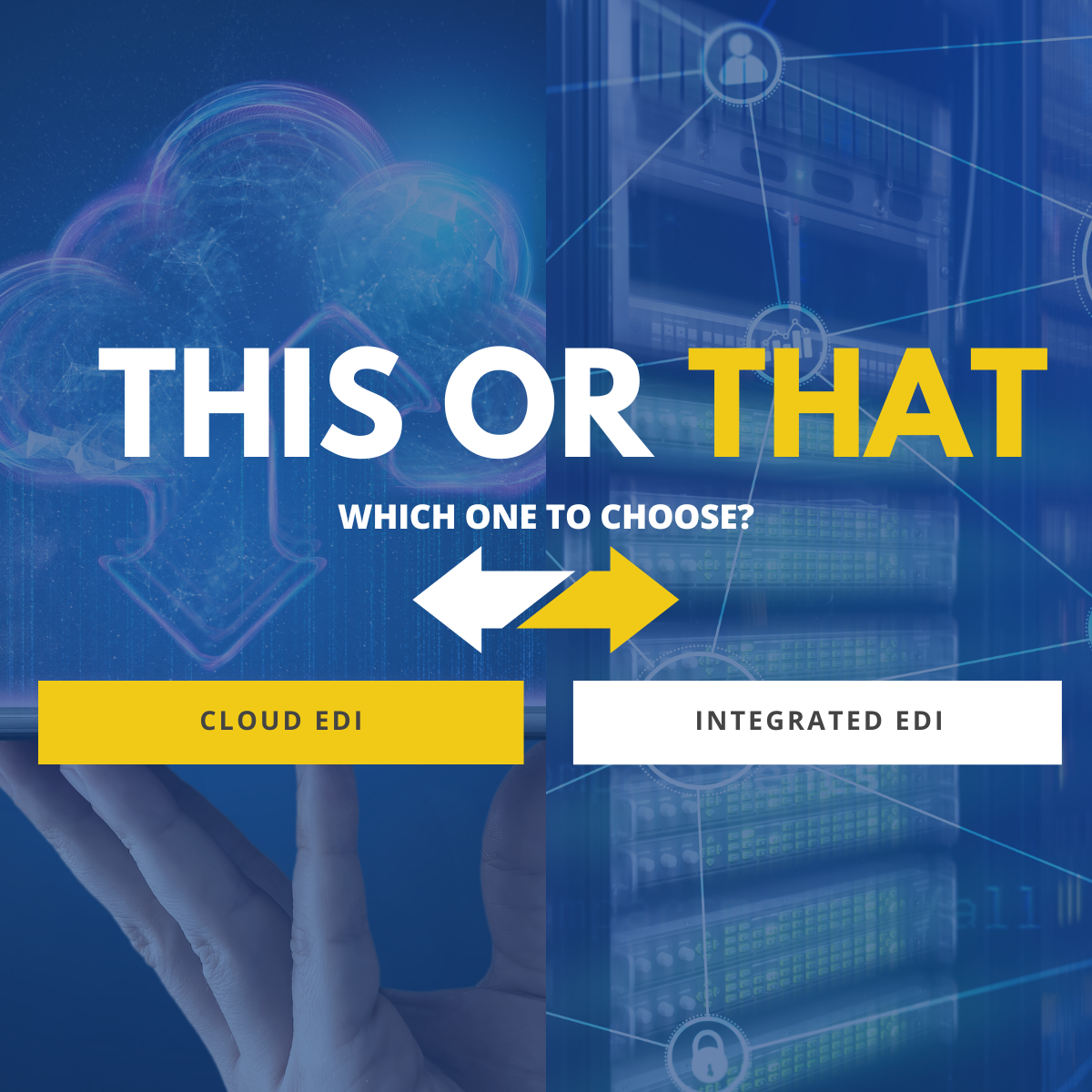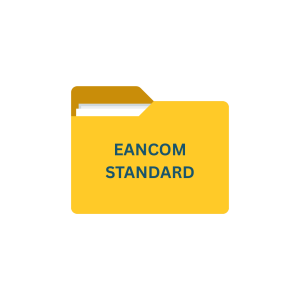Cloud EDI vs Integrated EDI
Introduction
The two prominent EDI solutions are Cloud EDI and Integrated EDI, each offering a unique set of advantages.
As an EDI expert, it is imperative to dissect the intricacies of these systems to guide businesses in making informed decisions. Let us delve into the realms of Cloud EDI and Integrated EDI, conducting a comprehensive comparison to highlight their respective strengths and weaknesses.
Key Takeaways
- Choosing between Cloud EDI and Integrated EDI depends on a business’s specific needs, resources, and growth plans.
- Cloud EDI offers flexibility, scalability, and ease of implementation without the need for complex IT infrastructure, making it ideal for businesses seeking cost-effective, on-demand solutions.
- Integrated EDI, on the other hand, provides seamless, automated data exchange directly into existing ERP or back-office systems, perfect for businesses with high transaction volumes and robust internal systems.
- Understanding the benefits and limitations of each helps businesses make informed decisions to optimize their supply chain efficiency and data integration.
What is Cloud EDI?
Cloud EDI, also known as Software as a Service (SaaS) EDI, represents a paradigm shift from traditional on-premise solutions. In this model, EDI services are hosted and managed on a cloud platform. This eliminates the need for businesses to invest in and maintain their own EDI infrastructure. Cloud EDI is characterized by scalability, accessibility, and rapid deployment, making it an attractive option for organizations with dynamic trading partner ecosystems.
What is Integrated EDI?
On the other hand, Integrated EDI involves the integration of EDI capabilities directly into an organization’s existing enterprise resource planning (ERP) or business management systems. EDI ERP integration tightly couples with core business operations, fostering seamless data flow and real-time synchronization. Integrated EDI is often favored by enterprises looking to centralize their data management and maintain a cohesive IT environment.
Comparison Table: Cloud EDI vs. Integrated EDI
| Company | Contact | Country |
|---|---|---|
| Deployment | Hosted on a cloud platform | Integrated into existing ERP or business systems |
| Scalability | Easily scalable based on business needs | Scales with overall business growth |
| Accessibility | Accessible from anywhere with an internet connection | Tightly integrated into internal systems |
| Implementation Time | Quick deployment with minimal setup | May require more time for integration and testing |
| Maintenance | Vendor-managed maintenance | In-house maintenance and updates may be required. |
| Cost Structure | Low cost and affordable pricing | Upfront investment with potential long-term cost savings |
| Customization | Limited customization options | Highly customizable to align with specific business processes |
| Trading Partner Connectivity | Streamlined onboarding of trading partners | Direct integration with existing partner networks |
| Compliance | Vendors often handle compliance updates | Compliance management integrated into ERP system |
| Security | Relies on cloud provider’s security measures | Internal control over security measures |
| Flexibility | Adaptable to changing business needs | May require additional development for changes |
| Data Integration | Relies on API connections for integration | Deep integration with ERP and data systems |
| Data Synchronization | Real-time synchronization with cloud infrastructure | Seamless data synchronization with internal systems |
| Control | Limited control over infrastructure and updates | Full control over system infrastructure and updates |
| Upgrades | Automatic updates by the cloud provider | Controlled upgrades based on business requirements |
| Dependencies | Dependent on the reliability of the cloud provider | Internal system dependencies and performance |
| Disaster Recovery | Managed by the cloud provider | Internal disaster recovery protocols in place |
| Implementation Costs | Generally lower initial costs | Potentially higher upfront implementation costs |
| Collaboration | Facilitates collaboration with external partners | Encourages collaboration within internal systems |
| System Integration | May require additional integrations for comprehensive functionality | Integrated functionalities within a unified system |
| Industry Focus | Suited for businesses with variable trading partner networks | Ideal for businesses with a stable and well-defined partner ecosystem |

Cloud EDI Benefits
Scalability: Cloud EDI allows businesses to scale their operations easily, accommodating fluctuations in transaction volumes and the addition of new trading partners without the need for significant infrastructure investments.
Accessibility: Users can access Cloud EDI from anywhere with an internet connection, providing flexibility for remote work and facilitating collaboration among stakeholders regardless of geographical locations
Rapid Deployment: The cloud-based nature of this solution enables quick deployment, allowing organizations to streamline their EDI processes and reap the benefits without lengthy implementation timelines.
Cost-Effective: Cloud EDI typically involves subscription-based pricing, reducing the upfront costs associated with hardware and infrastructure. This can be particularly advantageous for smaller businesses with budget constraints.
Vendor-Managed Maintenance: The responsibility of maintaining and updating the EDI system lies with the cloud service provider, freeing businesses from the burden of routine maintenance tasks and ensuring the system is always up-to-date.
Trading Partner Connectivity: Cloud EDI often offers streamlined onboarding processes for trading partners, facilitating quicker and more efficient collaboration with external entities.

Integrated EDI Benefits
Seamless Integration: Integrated EDI is deeply integrated into existing ERP or business systems, ensuring a seamless flow of data between different departments. This alignment fosters efficiency and eliminates data silos.
Real-Time Synchronization: The integration with core business systems allows for real-time synchronization of data, ensuring that information is up-to-date and accurate across the entire organization.
Highly Customizable: Integrated EDI systems are often highly customizable, allowing businesses to tailor the solution to their specific processes and workflows, ensuring a perfect fit with their unique requirements
Compliance Management: Compliance features are tightly woven into the ERP system, ensuring that businesses can easily manage and adhere to industry-specific regulations and standards without the need for separate compliance tools.
Full Control: Organizations have full control over their system infrastructure and updates, allowing them to schedule upgrades and maintenance based on their operational needs and avoiding potential disruptions.
Collaboration within Systems: Integrated EDI encourages collaboration within internal systems, fostering communication and coordination among different departments, which is especially beneficial for large enterprises with complex organizational structures.
Download Integrated EDI Guide
Unlock efficiency and enhance your supply chain with our Integrated EDI Solution—say goodbye to manual processes and multiple systems. Learn all you need to know about Integrated EDI and make an informed choice.
Conclusion
Choosing between Cloud EDI and Integrated EDI is a strategic decision that hinges on the unique requirements and priorities of a business. While Cloud EDI offers rapid deployment and scalability, Integrated EDI provides a holistic approach, tightly integrated into the core business functions. As an EDI expert, understanding these nuances is crucial for guiding organizations toward a solution that aligns seamlessly with their operational landscape. Ultimately, the choice between Cloud EDI and Integrated EDI should be driven by the specific needs, growth trajectory, and trading partner dynamics of each business.
Commport EDI Solutions
Frequently Asked Questions
Cloud EDI refers to an electronic data interchange system hosted and managed in the cloud. It enables businesses to exchange business documents such as purchase orders and invoices with their trading partners through a secure internet connection.
Integrated EDI involves the integration of electronic data interchange capabilities directly into a company’s existing enterprise resource planning (ERP) or business management software. This integration allows for seamless data exchange between the company’s internal systems and its trading partners.
Cloud EDI offers scalability, flexibility, and ease of implementation. It allows businesses to quickly onboard new trading partners without extensive IT resources. Additionally, cloud-based solutions often come with built-in compliance features and regular updates, ensuring that businesses stay current with evolving EDI standards.
Integrated EDI provides deeper integration with a company’s existing systems, leading to streamlined processes and reduced manual intervention. It allows for real-time data exchange, improving visibility and decision-making across the organization. Integrated solutions also offer greater control over data and customization options tailored to specific business needs.
The choice between cloud and integrated EDI depends on factors such as the size of your business, existing IT infrastructure, budget, and specific requirements. Small to medium-sized businesses may find cloud EDI more cost-effective and easier to implement, while larger enterprises with complex integration needs may benefit more from integrated solutions. It’s essential to evaluate your business goals and consult with EDI experts to determine the best fit for your organization.
Need Help? Download: EDI Buyers Guide
Unlock the full potential of your supply chain with our comprehensive EDI Buyer's Guide — your first step towards seamless, efficient, and error-free transactions





